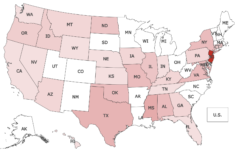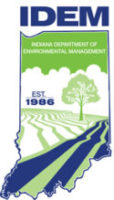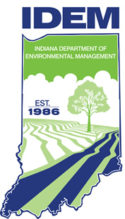 Legislation requiring state agencies to publish official notice on their websites was killed last week in committees in Indiana, Georgia and West Virginia.
Legislation requiring state agencies to publish official notice on their websites was killed last week in committees in Indiana, Georgia and West Virginia.
After passing the House last month by a comfortable margin, Indiana HB-1312 was defeated in a Senate committee by a vote of 8-2. The bill allowed every public notice in the state to eventually be posted on a state-agency website. It was rejected a week after the Hoosier State Press Association (HSPA) organized a statehouse rally at which “more than 100 Indiana publishers, editors, reporters and subscribers gathered outside the Senate chambers” to oppose the bill, according to Johnston County’s Daily Journal.
Report shows limits of government publishing capacity
![]() Almost 40 percent of the counties, cities, villages, and towns in Wisconsin don’t post their local ordinances on a website or, at best, have posted an “obviously incomplete listing of ordinances,” according to a report issued late this summer by the state’s Department of Administration (DOA).
Almost 40 percent of the counties, cities, villages, and towns in Wisconsin don’t post their local ordinances on a website or, at best, have posted an “obviously incomplete listing of ordinances,” according to a report issued late this summer by the state’s Department of Administration (DOA).
The agency also noted that many local governments that do post their ordinances on the web make it difficult or impossible to find them or to determine how comprehensive they are.
State press group asks for rate increase
 The South Dakota Newspaper Association (SDNA) recently testified in support of a rate increase for public notice advertisements published in its members’ newspapers. The Aug. 23 hearing had been called by the state’s Bureau of Administration (BOA) to consider its proposal to increase those rates by approximately 4.8 percent.
The South Dakota Newspaper Association (SDNA) recently testified in support of a rate increase for public notice advertisements published in its members’ newspapers. The Aug. 23 hearing had been called by the state’s Bureau of Administration (BOA) to consider its proposal to increase those rates by approximately 4.8 percent.
Under state law, BOA sets maximum rates for public notice advertising and is required to “annually review and adjust rates to reflect changes in economic conditions.” Nonetheless, it had been five years since the agency had done that before it initiated a formal review of fees in March. The review appeared to have been spurred by a written request the department received from SDNA a few days earlier.
Hog farm saga comes to an end
 In December 2012, residents of Newton County, Arkansas were surprised to see a hog farm being built on the banks of Big Creek, a tributary on the Buffalo National River. The state’s Department of Environmental Quality (ADEQ) had approved a permit for C&H Hog Farms to operate the Concentrated Animal Feeding Operation (CAFO). Notice about the farm was published that summer on ADEQ’s website but not in a local newspaper.
In December 2012, residents of Newton County, Arkansas were surprised to see a hog farm being built on the banks of Big Creek, a tributary on the Buffalo National River. The state’s Department of Environmental Quality (ADEQ) had approved a permit for C&H Hog Farms to operate the Concentrated Animal Feeding Operation (CAFO). Notice about the farm was published that summer on ADEQ’s website but not in a local newspaper.
Several years of lawsuits and increased environmental activism followed.
Poor Customer Service Sabotages Newspaper Notice
 When the Air Quality Division of the Indiana Department of Environmental Management (IDEM) announced a proposal last year to move all of its public notice advertising from newspapers to its own website, its motivation for doing so was clear: Bureaucratic efficiency.
When the Air Quality Division of the Indiana Department of Environmental Management (IDEM) announced a proposal last year to move all of its public notice advertising from newspapers to its own website, its motivation for doing so was clear: Bureaucratic efficiency.
“(IDEM’s) proposal never even bothers to claim e-notice will reach more Indiana citizens,” PNRC noted in the comments we filed opposing the plan. “It focuses instead on cost, convenience and expedience. Those are all worthy goals. Unfortunately, none are the primary purpose of public notice laws.”
How Newspaper Notice is Supposed to Work
 When the Board of Elections in majority-black Randolph County, Georgia introduced a proposal earlier this month to close seven of the county’s nine polling places, many residents were angry. Some even accused the Board of trying to hide the proposal.
When the Board of Elections in majority-black Randolph County, Georgia introduced a proposal earlier this month to close seven of the county’s nine polling places, many residents were angry. Some even accused the Board of trying to hide the proposal.
The truth is less damning: Even if the Board wanted to hide the plan, it would have been prevented from doing so by Georgia law, which required the county agency to publish two notices about it in a local newspaper. And the notices worked exactly as the law intended, drawing widespread attention to the proposal. In fact, it briefly received national attention, with many characterizing the plan as a Republican effort to suppress the African-American vote before this fall’s election. Nevertheless, when local activists accused the Board of a cover-up, some national media outlets took the bait. For instance, here’s how the Washington Post described the notice process:
Notice Again at Issue in Battle Over Arkansas Hog Farm
 In December 2012, residents of Newton County, Arkansas were shocked to learn that the state’s Department of Environmental Quality (ADEQ) had approved a permit to operate a hog farm on the banks of Big Creek, a tributary on the Buffalo National River. To learn about the permit application they would have had to visit ADEQ’s website, where notice about it had been published for 30 days that summer. The notice was not published in a local newspaper.
In December 2012, residents of Newton County, Arkansas were shocked to learn that the state’s Department of Environmental Quality (ADEQ) had approved a permit to operate a hog farm on the banks of Big Creek, a tributary on the Buffalo National River. To learn about the permit application they would have had to visit ADEQ’s website, where notice about it had been published for 30 days that summer. The notice was not published in a local newspaper.
The agency received no comments about the application. It was approved a week after notice was posted on its website. The process was so secretive that even the Buffalo National River staff and the National Park Service didn’t know about it.
Michigan Approves Controversial Nestle Proposal Despite Public Opposition
 Q: When does a vote of 80,945 to 75 result in a win for the 75?
Q: When does a vote of 80,945 to 75 result in a win for the 75?
A: When a state agency gets to cast the deciding ballot.
Although it wasn’t technically a vote, Michigan’s Department of Environmental Quality (MDEQ) last month approved Nestle Water’s controversial request to pump more groundwater for its Ice Mountain bottling plant despite that lopsided margin. In fact, NPR reports that the 80,945 public comments MDEQ received opposing the proposal set a record.
Michigan Reporter Wins Public Notice Journalism Award
 Garret Ellison, a reporter for MLive and The Grand Rapids Press, today was named winner of PNRC’s 2018 Public Notice Journalism Award. Ellison won for a series of stories about an application submitted to the Michigan Department of Environmental Quality (MDEQ) by Nestle Waters North America to pump more groundwater from a local well. He is the first reporter in the history of the PNRC contest to be awarded for a story revealing the inadequacy of government website notice.
Garret Ellison, a reporter for MLive and The Grand Rapids Press, today was named winner of PNRC’s 2018 Public Notice Journalism Award. Ellison won for a series of stories about an application submitted to the Michigan Department of Environmental Quality (MDEQ) by Nestle Waters North America to pump more groundwater from a local well. He is the first reporter in the history of the PNRC contest to be awarded for a story revealing the inadequacy of government website notice.
Ellison will receive a $500 award and a trip to Washington, D.C., where he will be honored at a special March 15 dinner at the National Press Club.
PNRC Files Comments Opposing Indiana Agency Proposal
 The Public Notice Resource Center filed comments early last month urging the Indiana Department of Environmental Management (IDEM) to reconsider its recent proposal to eliminate the newspaper notice requirement for certain permits issued under the Clean Air Act (CAA). IDEM’s proposal cited last year’s decision by the EPA to discontinue mandatory newspaper notice for such permits at the federal level. That new rule opened the door for EPA state affiliates like IDEM to follow suit.
The Public Notice Resource Center filed comments early last month urging the Indiana Department of Environmental Management (IDEM) to reconsider its recent proposal to eliminate the newspaper notice requirement for certain permits issued under the Clean Air Act (CAA). IDEM’s proposal cited last year’s decision by the EPA to discontinue mandatory newspaper notice for such permits at the federal level. That new rule opened the door for EPA state affiliates like IDEM to follow suit.
PNRC argued that Indiana newspapers and their websites are far more effective at providing official notice than IDEM’s website. It also cautioned that highly publicized controversies at state environmental agencies in Michigan and Arkansas demonstrate that few citizens ever see notices posted on government websites.
